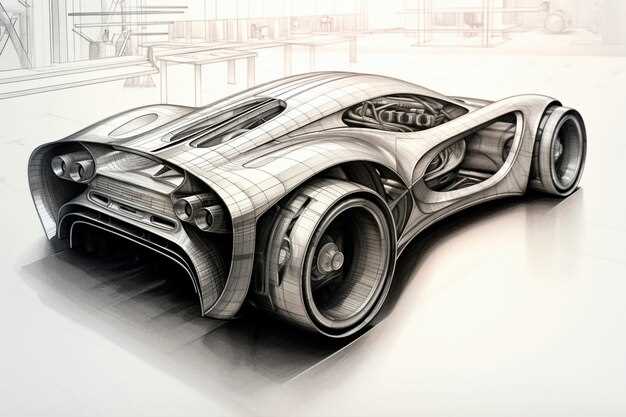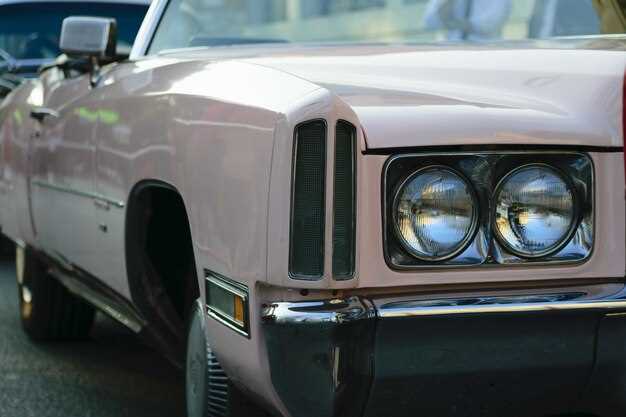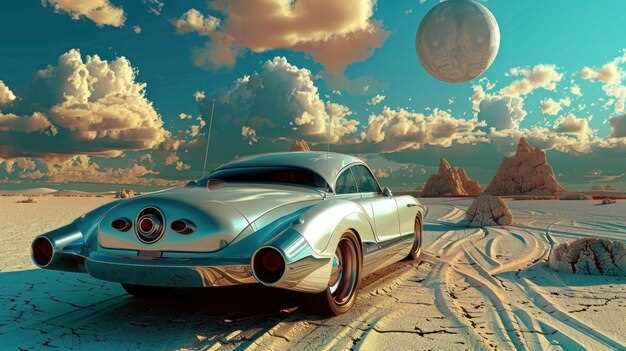
The design of classic cars reflects a rich tapestry of technological advancements, cultural shifts, and aesthetic movements over the decades. Beginning in the early 20th century, automobiles transitioned from mere transportation devices to symbols of freedom and personal expression. Each decade brought forth distinct styles and innovations that not only defined an era but also influenced future generations of automotive design.
In the 1920s, the advent of the Art Deco movement introduced elegant lines and luxurious materials, emphasizing both beauty and speed. The chrome and color schemes of this era became hallmarks of the classic car aesthetic. Moving into the 1950s, the rise of the American muscle car showcased raw power and aggressive styling, characterized by bold colors and tailfins that appealed to a burgeoning youth culture eager for adventure.
The 1970s marked a shift towards more pragmatic designs, influenced by increasing environmental awareness and safety regulations. The sleek, aerodynamic shapes dominated by European manufacturers paved the way for a new era of fuel efficiency without sacrificing style. Meanwhile, the 1980s and 1990s embraced technology, integrating digital elements and pushing boundaries with innovative materials and manufacturing techniques that shaped modern car design.
As we delve into the evolution of classic car design through these decades, we will explore how each period not only reflected the technological capabilities of the time but also the changing values and aspirations of society. Understanding this evolution provides insight into the future of automotive design and the enduring legacy of classic cars in popular culture.
Analyzing the Impact of 1920s Art Deco Trends on Automotive Aesthetics
The 1920s marked a significant turning point in automotive design, driven largely by the influence of the Art Deco movement. This artistic style, characterized by its geometric shapes, vibrant colors, and luxurious materials, reshaped not only architecture and fashion but also the aesthetics of automobiles. During this time, cars evolved from utilitarian vehicles into symbols of prestige and modernity.
Art Deco introduced a sense of elegance and dynamism that was reflected in the streamlined forms of the vehicles produced in this decade. Manufacturers began to emphasize smooth lines and aerodynamic profiles, departing from the boxy designs of earlier models. The integration of chrome accents and bold, sweeping curves created an impression of speed and sophistication, aligning with the spirit of the Roaring Twenties.
One of the key features influenced by Art Deco was the use of decorative elements. Radiator grilles, fenders, and trim were embellished with intricate patterns and motifs inspired by the era’s art. This decorative approach not only added visual interest but also conveyed a sense of craftsmanship and individuality that appealed to consumers seeking luxury. Brands like Chrysler and Packard embraced these elements, positioning their vehicles as works of art rather than merely modes of transportation.
Furthermore, the color palette used in car design during this period was heavily influenced by Art Deco. Rich, bold colors, often combined with metallic finishes, created a striking visual impact. This departure from the dull, monochromatic tones of previous decades played a significant role in attracting buyers who desired a vehicle that reflected their status and taste.
In addition to form and color, the interiors of cars also saw transformations driven by Art Deco principles. Luxurious materials such as leather and wood were incorporated, and interiors were designed with an emphasis on comfort and opulence. This focus on creating a lavish environment inside the vehicle mirrored the grand lifestyles of the decade’s affluent population.
Ultimately, the Art Deco movement not only influenced the aesthetics of the 1920s automobile but also laid the groundwork for future automotive design philosophies. The emphasis on style and visual appeal paved the way for subsequent trends, ensuring that cars became an integral part of cultural identity and expression. As a result, the legacy of Art Deco continues to resonate in automotive design today, reminding us of an era when elegance and artistry were paramount on the road.
Exploring the Role of Aerodynamics in 1960s Muscle Car Design

The 1960s represented a pivotal era in automotive design, particularly with the emergence of the muscle car. These vehicles were characterized not only by their powerful engines but also by their distinctive aesthetics and performance enhancements. One crucial aspect that influenced muscle car design during this decade was aerodynamics.
Manufacturers began to recognize that aerodynamic efficiency played a significant role in enhancing vehicle performance, particularly at higher speeds. Cars like the Ford Mustang, Chevrolet Camaro, and Pontiac GTO exemplified this shift. Designers focused on creating streamlined body shapes that reduced drag, improving acceleration and fuel efficiency, which were becoming increasingly important as competition intensified.
The wedge shape became a popular choice among designers, as it allowed air to flow smoothly over the vehicle’s surface. This design principle not only minimized air resistance but also contributed to stability at high speeds. Features such as hood scoops and rear spoilers were integrated to optimize airflow, enhancing downforce and grip without compromising the muscle car’s aggressive look.
Additionally, the emphasis on aerodynamics influenced the materials used in construction. Lighter materials, such as fiberglass, started to be incorporated into bodies and panels, further reducing weight and improving performance. This innovation allowed manufacturers to strike a balance between aesthetics and functionality, which was critical for gaining market share in a competitive landscape.
The iconic design elements of 1960s muscle cars, combined with an increasing understanding of aerodynamics, marked a significant evolution in automotive engineering. The advances made during this decade laid the foundation for future performance vehicles, demonstrating that aesthetics and function could coexist harmoniously in muscle car design.
Identifying Key Features of 1980s Retro-Futurism in Car Manufacturing

The 1980s marked a distinctive era in automotive design, characterized by a blend of nostalgia and futuristic elements, often referred to as retro-futurism. This style emphasized bold aesthetics that combined geometric shapes, vibrant colors, and innovative technologies.
Geometric Shapes and Angular Design: One of the defining traits of 1980s car design was the use of sharp angles and geometric profiles. Vehicles featured boxy silhouettes, such as the Chevrolet Blazer and the Ford Bronco, which were a stark contrast to the curvier designs popular in the previous decade. This angularity conveyed a sense of strength and modernity, appealing to car buyers seeking a more assertive appearance.
Neon Colors and Bold Graphics: The 1980s embraced bright colors and distinctive graphic designs. Car manufacturers began to introduce vibrant paint options, including neon greens, pinks, and blues, alongside eye-catching decals and patterns. This approach was not just about aesthetics; it was a way to capture the carefree spirit of the decade and resonate with youthful consumers.
Technological Innovations: Retro-futurism in the 1980s was also driven by significant technological advancements. Features such as digital dashboards, advanced audio systems, and electronic fuel injection became more widespread. Vehicles like the Jeep Grand Wagoneer incorporated luxurious interiors with digital displays that showcased cutting-edge technology of the time, further enhancing the futuristic appeal.
Pop Culture Influence: The automotive designs of the 1980s were heavily influenced by pop culture. Movies like “Back to the Future” and the resurgence of science fiction themes inspired manufacturers to create cars that mirrored this cinematic vision of the future. Models such as the DeLorean DMC-12 became iconic representations of this blend between imagination and reality, with their sleek stainless-steel bodies and gull-wing doors.
Emphasis on Personalization: During this decade, manufacturers began to recognize the importance of personalization in vehicle ownership. Customization options allowed buyers to select unique features and accessories, catering to the individualistic ethos of the time. Models like the Pontiac Firebird showcased diverse trim packages, enabling consumers to tailor their vehicles to reflect personal style.
In conclusion, the 1980s retro-futurism in car manufacturing was marked by a combination of geometric designs, vivid colors, technological advancements, and cultural influences. These characteristics not only defined the vehicles of the era but also left a lasting legacy that continues to inspire contemporary car design.
